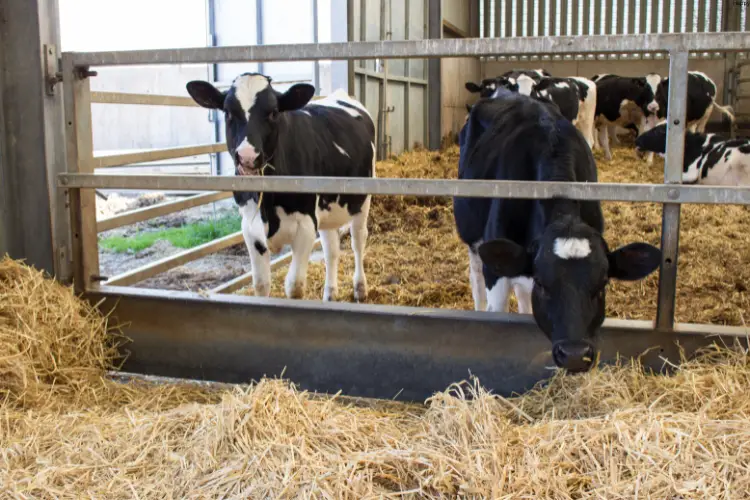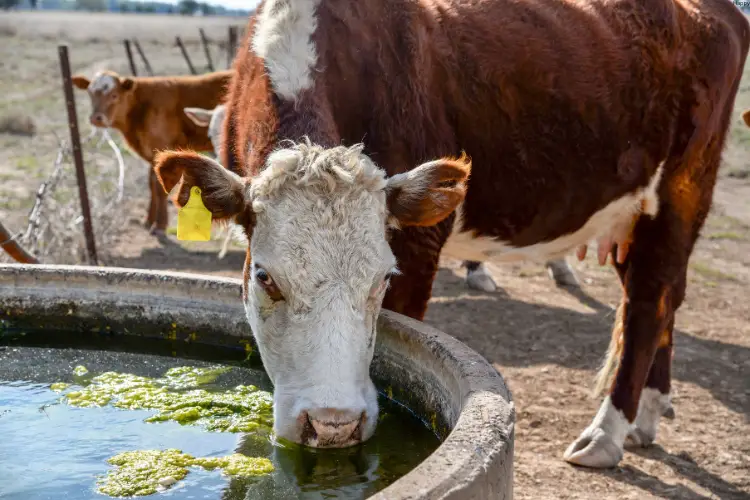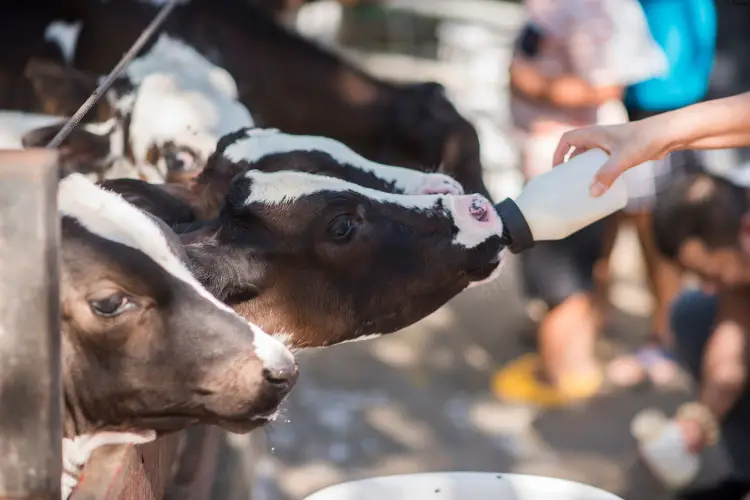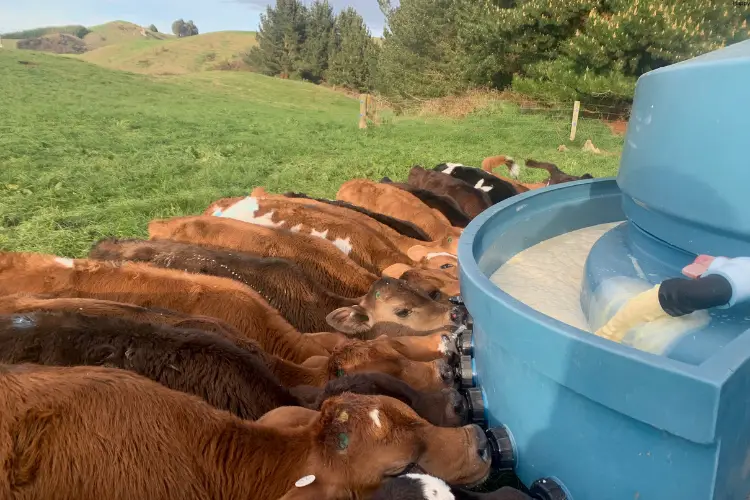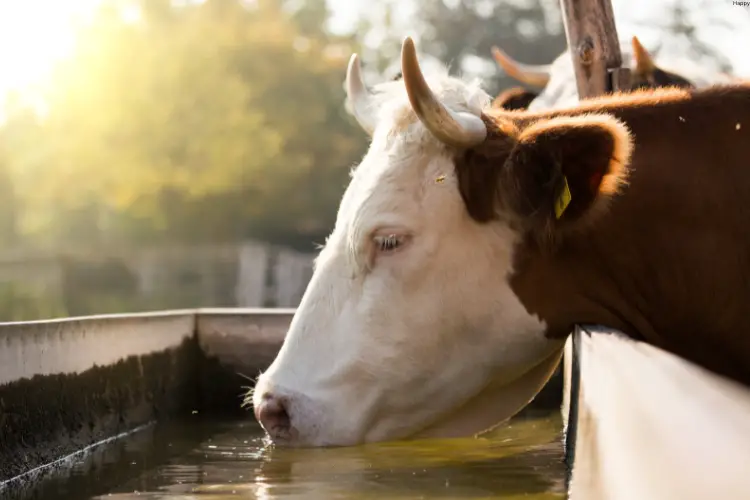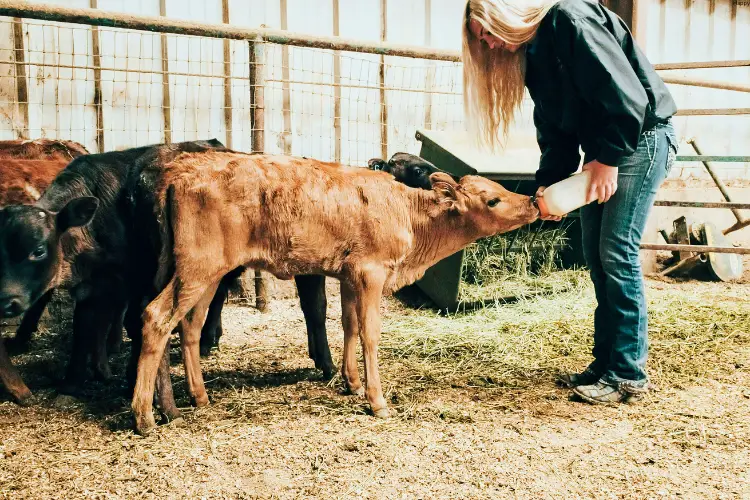Raising healthy dairy heifers is crucial for the long-term success and profitability of any dairy operation. Proper nutrition during the growth phase sets the foundation for future milk production and overall herd performance.
In this blog post we’ll intricacies of feeding dairy heifers for optimal growth, covering everything from nutritional requirements to practical feeding strategies.
Understanding the Importance of Proper Heifer Nutrition
Dairy heifers represent the future of your herd. Their growth and development directly impact:
- Future milk production potential
- Reproductive efficiency
- Longevity in the herd
- Overall farm profitability
Investing in a well-planned feeding program for your heifers can yield significant returns in the form of healthier, more productive cows.
Key Nutritional Requirements for Dairy Heifers
1. Energy
Energy is the primary driver of growth in dairy heifers. Adequate energy intake ensures:
- Proper weight gain
- Skeletal development
- Mammary gland growth
The energy requirements of heifers vary depending on their age, size, and growth stage. It’s crucial to provide a balanced diet that promotes steady growth without excessive fattening.
2. Protein
Protein is essential for:
- Muscle development
- Enzyme production
- Hormone synthesis
Growing heifers require a higher percentage of protein in their diet compared to mature cows. The protein content should be adjusted as the heifer ages to match her changing nutritional needs.
3. Minerals and Vitamins
A well-balanced mineral and vitamin profile is crucial for:
- Bone development
- Immune function
- Overall health
Key minerals for dairy heifers include calcium, phosphorus, magnesium, and trace minerals like copper, zinc, and selenium. Vitamins A, D, and E are particularly important for growing heifers.
Feeding Strategies for Different Growth Stages
1. Birth to Weaning (0-2 months)
During this critical phase, the focus is on:
- Colostrum management
- Milk or milk replacer feeding
- Introduction of calf starter feed
Proper nutrition in this stage sets the foundation for future growth and health.
2. Post-Weaning to 6 Months
As heifers transition from liquid to solid feed, key considerations include:
- Gradual introduction of forages
- Balanced grain mix to support growth
- Monitoring of growth rates
3. 6 Months to Breeding Age
This stage focuses on:
- Increased forage intake
- Balanced protein and energy ratios
- Mineral supplementation for skeletal growth
4. Breeding Age to Calving
The final stage of heifer development requires:
- Controlled energy intake to prevent overconditioning
- Adequate protein for fetal development
- Transition to the pre-calving diet
Practical Feeding Guidelines
1. Forage Quality and Quantity
High-quality forages should form the basis of the heifer diet. Consider the following:
- Use of pasture when available
- Hay or silage as primary forage sources
- Balancing forage quality with concentrate supplementation
2. Concentrate Supplementation
Grain mixes and protein supplements play a crucial role in meeting energy and protein requirements. Key points include:
- Formulating concentrates based on forage analysis
- Adjusting concentrate levels based on growth targets
- Incorporating byproduct feeds for cost-efficiency
3. Water Availability
Clean, fresh water is essential for:
- Proper feed intake
- Digestion
- Thermoregulation
Ensure unrestricted access to water at all times.
Growth Monitoring and Feed Adjustment
Regular monitoring of heifer growth is crucial for the success of any feeding program. Consider implementing:
- Regular weighing or weight tape measurements
- Height measurements at the withers
- Body condition scoring
Use this data to adjust feed rations as needed to maintain optimal growth rates.
Table: Recommended Daily Nutrient Requirements for Dairy Heifers
| Age (months) | Body Weight (kg) | Dry Matter Intake (kg/day) | Crude Protein (%) | TDN (%) | Ca (%) | P (%) |
|---|---|---|---|---|---|---|
| 3-6 | 100-150 | 3.0-4.5 | 16-17 | 68-70 | 0.70 | 0.45 |
| 7-12 | 150-300 | 5.0-7.0 | 14-15 | 65-68 | 0.60 | 0.40 |
| 13-18 | 300-450 | 7.5-9.5 | 13-14 | 62-65 | 0.50 | 0.35 |
| 19-24 | 450-550 | 10.0-11.5 | 12-13 | 60-62 | 0.45 | 0.35 |
Common Challenges in Heifer Nutrition
1. Overconditioning
Excessive energy intake can lead to:
- Fat deposition in the mammary gland
- Reduced future milk production potential
- Calving difficulties
To prevent overconditioning:
- Monitor body condition scores regularly
- Adjust energy density of the diet as needed
- Provide adequate exercise opportunities
2. Underfeeding
Insufficient nutrition can result in:
- Delayed puberty
- Reduced growth rates
- Compromised immune function
To avoid underfeeding:
- Ensure adequate feed availability
- Regularly assess feed quality
- Address any feed intake issues promptly
3. Mineral Imbalances
Improper mineral nutrition can lead to:
- Skeletal abnormalities
- Reproductive issues
- Metabolic disorders
To maintain proper mineral balance:
- Conduct regular forage and water analyses
- Formulate diets based on specific mineral requirements
- Consider the use of organic mineral sources for improved bioavailability
4. Optimizing Feed Efficiency
Improving feed efficiency can significantly impact the economics of heifer raising. Consider the following strategies:
- Implement precision feeding techniques
- Use feed additives judiciously (e.g., ionophores)
- Minimize feed waste through proper storage and feeding practices
- Group heifers by size and nutritional needs for targeted feeding
Environmental Considerations
Feeding strategies should also take into account environmental factors:
- Adjust rations for seasonal temperature changes
- Provide adequate shelter and ventilation
- Consider the impact of heat stress on feed intake and nutrient requirements
The Role of Technology in Heifer Nutrition
Modern dairy operations can benefit from technological advancements in heifer feeding:
- Automated feeding systems for precise ration delivery
- Data management software for growth tracking and ration formulation
- Genomic testing for tailored nutrition plans based on genetic potential
Preparing Heifers for Transition to the Milking Herd
As heifers approach calving, focus on:
- Gradual introduction to the lactating cow diet
- Socialization with the milking herd
- Nutritional support for the final stages of fetal development and colostrum production
Conclusion
Feeding dairy heifers for optimal growth is a complex but crucial aspect of dairy farm management.
By understanding the nutritional requirements at each growth stage and implementing targeted feeding strategies, producers can raise healthy, productive heifers that will contribute to the long-term success of their operation.
Regular monitoring, adaptation to individual farm conditions, and a commitment to continuous improvement are key to achieving the best results in heifer nutrition programs.
Remember, every heifer represents an investment in your dairy’s future. By providing the right nutrition from birth to calving, you’re setting the stage for a productive and profitable lactation career.

